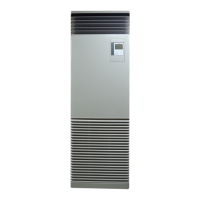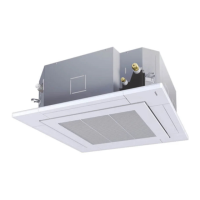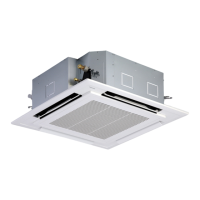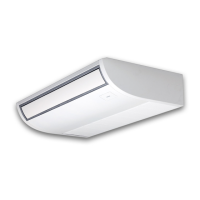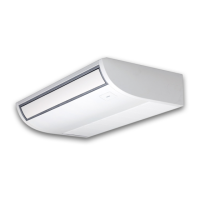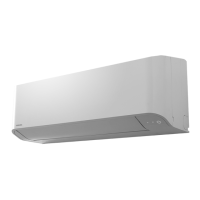
Do you have a question about the Toshiba RAV-HM301KRTP-E and is the answer not in the manual?
| Category | Air Conditioner |
|---|---|
| Type | Split System |
| Heating Capacity (kW) | 3.2 |
| Power Supply | 220-240 V, 50 Hz |
| Energy Efficiency Ratio (EER) | 3.21 |
| Coefficient of Performance (COP) | 3.61 |
| Refrigerant | R32 |
| Indoor Unit Dimensions (WxHxD) | 798 x 293 x 230 mm |
| Outdoor Unit Dimensions (WxHxD) | 660 x 530 x 240 mm |
| Indoor Unit Weight | 9 kg |
Details of components of the indoor unit with numbered labels.
Explains the functions and controls of the wireless remote controller.
Procedure for setting the clock on the remote controller.
Initial clock display status when batteries are inserted.
Instructions for installing and using the remote controller holder.
Guidelines for optimal placement of the remote controller for signal reception.
Steps for starting and stopping cooling, heating, or fan only modes.
Procedure for starting and stopping the dry operation mode.
How to use auto changeover mode for cooling/heating.
Instructions for setting and cancelling timer operations.
How to activate and deactivate the Hi POWER operation mode.
How to activate and deactivate the QUIET operation mode.
How to memorize and recall preferred operation settings.
Using the COMFORT SLEEP mode for automatic temperature adjustment.
Guide to adjusting vertical and horizontal airflow directions.
How to adjust vertical airflow using the remote controller.
Instructions for manually adjusting the horizontal airflow louvers.
Procedure to enable the automatic restarting feature of the air conditioner.
Steps to disable the automatic restarting feature.
How to operate the unit temporarily when the remote is lost.
Instructions for cleaning the indoor unit and its remote controller.
Step-by-step guide to cleaning the air filters.
Procedure for removing and cleaning the air inlet grille.
Steps to prepare the unit for extended periods of non-use.
Recommendations for periodic checks and professional maintenance.
Points to check before requesting service or repairs.
Troubleshooting common issues with cooling and heating.
Common phenomena that are not actual malfunctions.
Reasons why FIX or SWING modes may not function.
Formal declaration of compliance with relevant directives and regulations.


